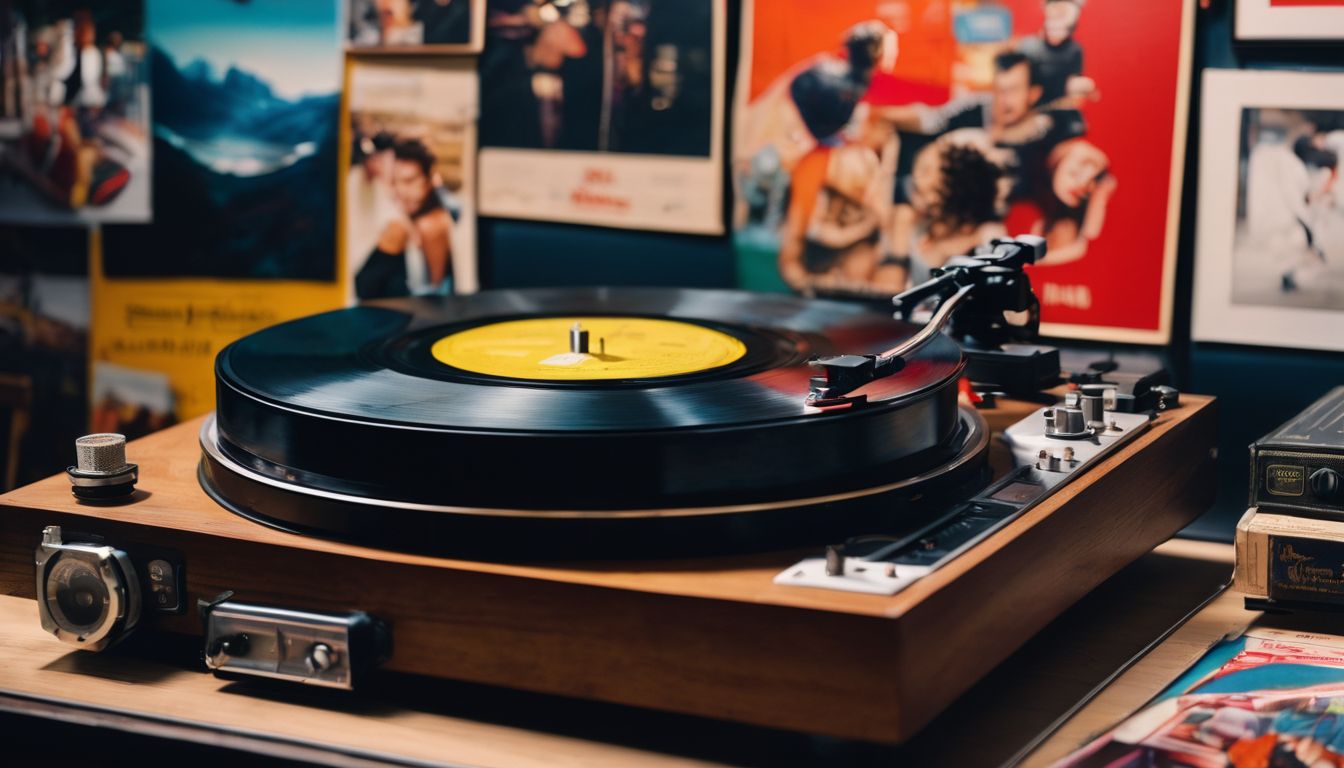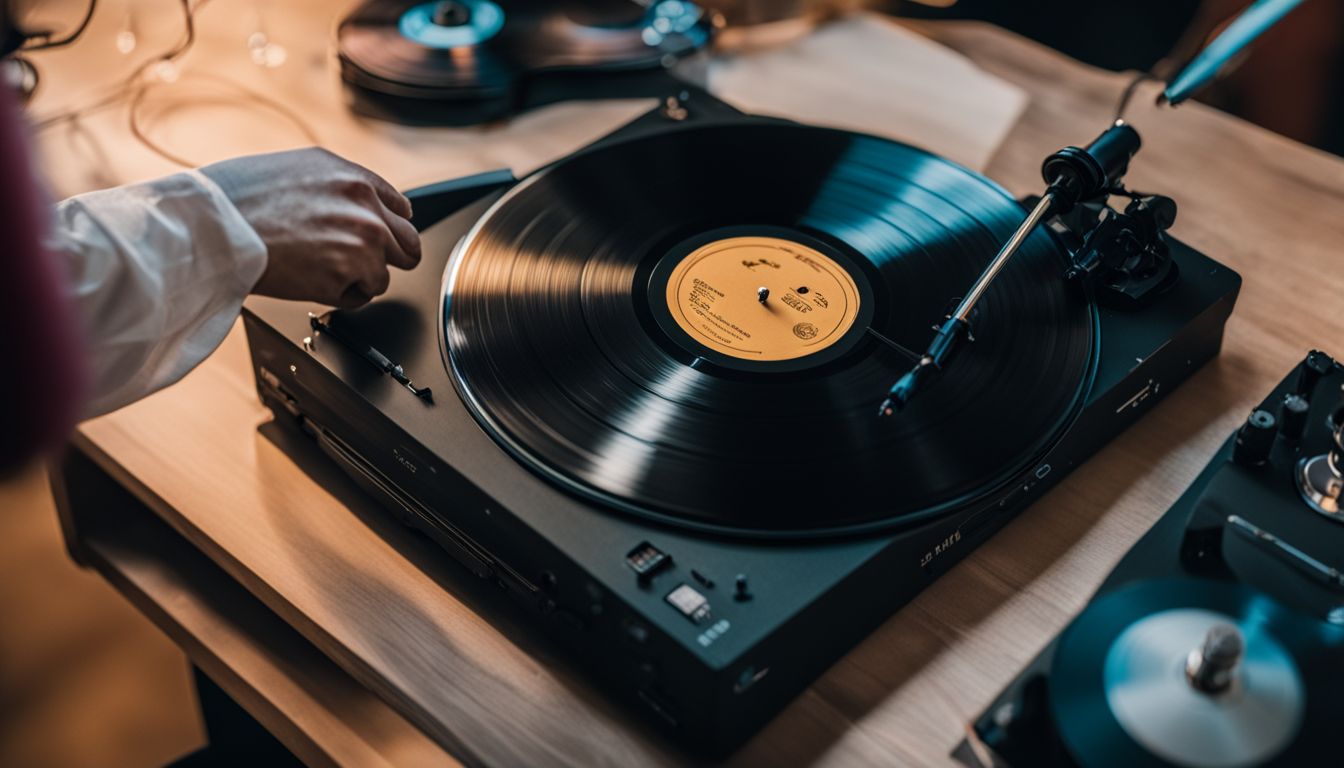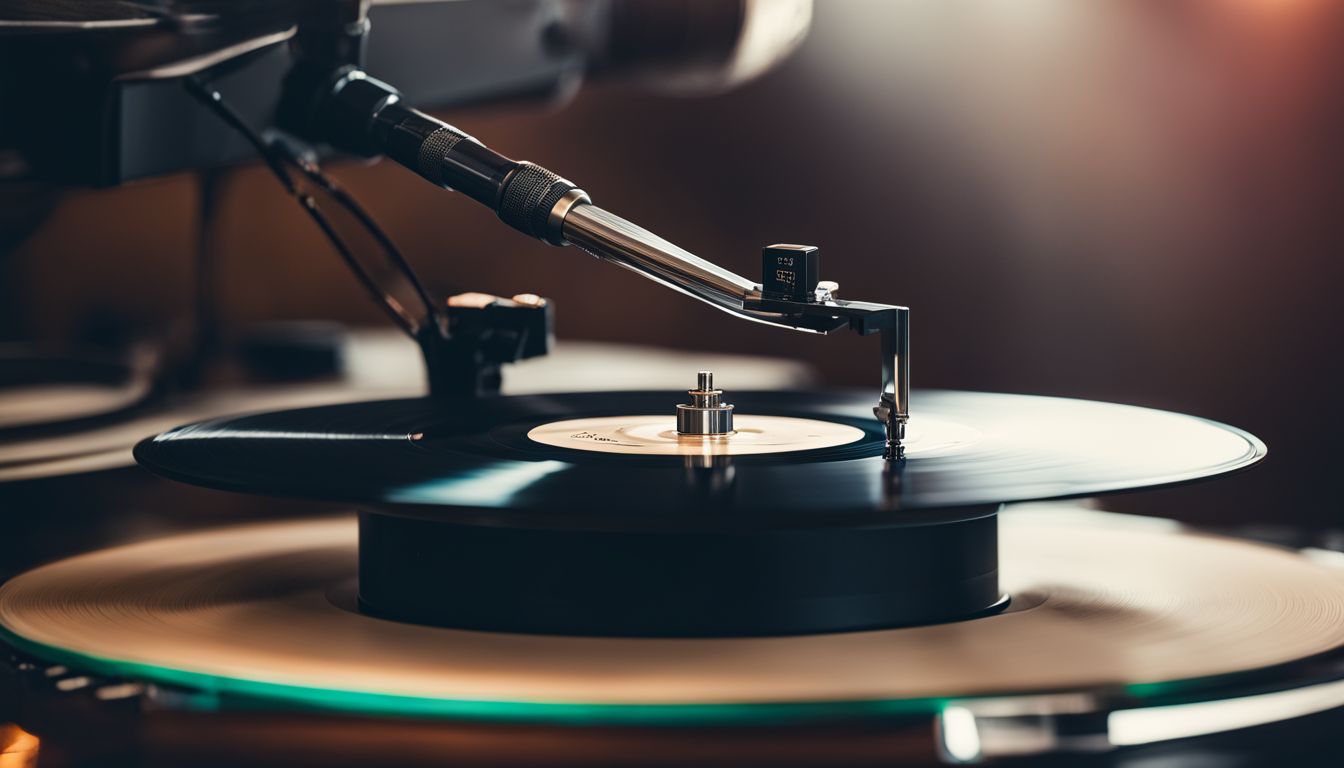Stylus scratches on your favorite vinyl can be a real heartbreaker. Cueing on a turntable is the art of precisely lowering and raising the needle, or stylus, onto the record. Our guide dives into why mastering this technique protects your collection and enhances listening pleasure.
Keep reading; we’re spinning up some essential tips next!
Key Takeaways
- A cue lever is a turntable feature that lets you safely and accurately lower the stylus onto your vinyl record, preventing scratches and damage.
- Anti-skate is different from cueing; it stops the tonearm from sliding towards the center of the record, making sure your music plays evenly without skipping.
- Not using a cue lever can lead to scratched records and worn-out styli, resulting in poor audio quality and potentially damaging your turntable’s mechanics.
- Turntables with silicone-damped cue levers are ideal as they provide smoother handling, protecting both the record and stylus during playback.
- Quality turntables like the Denon DP-400 or U-Turn Orbit Basic not only have precise cue levers but also features like automatic return and auto-stop for additional protection of your vinyl collection.
What is a cue lever on a turntable, and how does it work?
The cue lever on a turntable is an essential tool for precisely lowering the stylus onto a vinyl record, offering both protection for your cherished collection and enhanced control during playback.
Contrary to simply using one’s hand, this mechanism enables smooth engagement with the groove, ensuring accuracy and stability that benefit audiophiles and casual listeners alike.
Importance of Cue Lever for Vinyl Enthusiasts
Vinyl enthusiasts know that a cue lever is much more than just a part of their turntable; it’s a crucial tool for preserving their precious records and stylus. It serves as a safe passage for the needle to meet the record’s surface, eliminating shaky hands from the equation.
This precision prevents unnecessary wear or those dreaded scratches that can ruin both sound quality and vinyl value.
Using this small but mighty device translates to clear, uninterrupted music every time you lower the tonearm. Cue levers with silicone dampening provide an even smoother descent, cushioning any impact between your stylus and grooves.
Trustworthy and reliable, they ensure that each listening session begins without hiccups or harm to your collection.
Proper Usage of the Cue Lever on a Turntable
Using the cue lever on a turntable correctly is essential for preventing damage to your precious vinyl records. Mastery of this simple tool enhances your listening experience and ensures the longevity of your equipment.
- Start by turning on your turntable and selecting the desired speed for your record. This might be either 33 or 45 revolutions per minute (rpm), depending on the record type.
- Carefully hold the tonearm’s headshell to steady it, ensuring you don’t touch the stylus or needle unnecessarily.
- Gently lift the cueing lever with your free hand; this action raises the tonearm and stylus off the platter.
- Move the tonearm until it hovers over the start of the track you want to play. Precision here prevents scratches and ensures a clean entry into the groove.
- Slowly lower the cueing lever back down, which will let the stylus rest at its starting position on the vinyl without bouncing or sliding.
- Enjoy your music as it begins to play smoothly from where you’ve cued up. The sound should be clear without any jarring pops, unless there are imperfections in your vinyl.
- Once finished with one side of your record, lift up on the cue lever again. This lifts up the stylus safely.
- Return now to place your tonearm back onto its cradle or resting area; doing so keeps everything secure and tidy while not in use.
Understanding Turntable Mechanics: Cueing vs. Anti-Skate
The listener can place the stylus precisely where they want the music to start on a turntable, preventing scratches and ensuring that not even a second of sound is missed.
This process utilizes a cue lever or tonearm lifter, which delicately handles the needle’s descent onto the vinyl record. It’s an essential feature for maintaining both record and stylus integrity, as dropping the needle by hand can cause unnecessary wear or damage.
Anti-skate counters the force known as skating, which causes the arm to move toward the center of the record due to friction between the needle and groove. Skating causes the arm to move toward the center of the record due to friction between the needle and groove.
Anti-skate applies an equal but opposite force, keeping playback consistent across every inch of your favorite tracks. Together with cueing, these features contribute significantly to high-quality audio output and prolonging your collection’s lifespan without compromising style or functionality.
The potential risks of not using a cue lever include:
Operating a turntable without utilizing the cue lever might seem like no big deal, but this oversight can cause significant harm to your vinyl collection and play equipment. The cue lever’s precision engineering gently lowers the stylus onto the record surface, minimizing wear and tear on both.
Without it, you risk dropping or dragging the needle across your precious records. This mishap not only scratches what could be irreplaceable vinyl but also wears down the delicate tip of your stylus much faster than normal use would, leading to distorted audio quality.
Manually placing the tonearm may appear straightforward; however, it requires a steady hand and a keen sense of accuracy that even seasoned vinyl enthusiasts struggle with. A misplaced stylus due to shaky hands or imprecise positioning can result in skipping tracks or failing to land in record grooves correctly.
Such errors often lead to audible pops and crackles that degrade the listening experience significantly. Furthermore, consistently handling the tonearm without a cue lever’s assistance accelerates potential mechanical issues within your turntable’s armature mechanism.
With these risks in mind, understanding how essential a functioning cue lever is becomes clear as we consider choices for reliable turntables equipped with this crucial feature.
Selecting a Reliable Turntable with a Cue Lever
When picking out a turntable, pay close attention to the cue lever’s design and functionality. Look for silicone-damped models that carefully manage the tonearm’s descent, safeguarding both your stylus and records from unnecessary wear or damage.
Vinyl enthusiasts know well-built cue levers contribute significantly to the long-term preservation of their collection.
The Denon DP-400 turntable offers user-friendly features, including an automatic tonearm return and auto-stop function, ensuring your records are taken care of even if you get distracted.
The U-Turn Orbit Basic is another solid choice, boasting a reliable cue lever that offers precision without breaking the bank. Making sure these elements are in place will lead to hassle-free enjoyment of your favorite vinyls.
Conclusion
Understanding the cue lever’s role transforms your vinyl listening experience, guarding against common mistakes that could harm your music collection. Equipped with a high-quality cue lever, a reliable turntable grants you precision control over every play.
Embrace this essential feature and ensure your records spin flawlessly for years to come. Turntable mastery begins with mastering the art of cueing—elevate your setup today. Take charge of your vinyl journey, knowing how vital proper cueing is to the life of your tunes.
To fully grasp the technicalities of turntable operation, including how anti-skate functions alongside cueing, visit our detailed guide, Understanding Turntable Anti-Skate.
FAQs
What does cueing on a turntable mean?
Cueing on a turntable refers to placing the stylus, which is the needle of the record player, precisely at the beginning of a track on vinyl records for accurate playback.
Are there different types of cueing mechanisms?
Yes, audio equipment for playing vinyl often includes either manual or automatic cueing mechanisms to assist with stylus placement and ensure needle drop precision during track selection.
Why is proper cueing important when using a turntable?
Proper cueing is crucial because it helps maintain high audio fidelity; it ensures that you get clear sound without damaging your vinyl records or wearing out the stylus prematurely.
Do DJs use special cues in their performances?
DJs utilize specific DJ performance techniques involving precise manual cueing skills for live music mixing and matching beats seamlessly during their shows.


